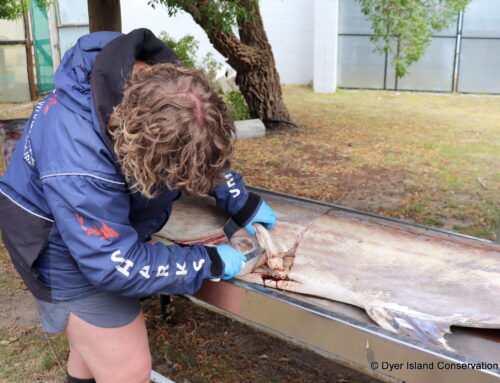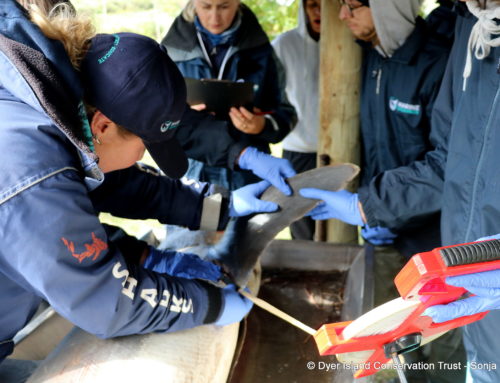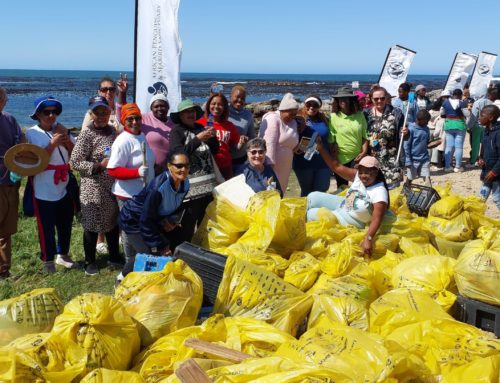Deployment Success
June 25, 2015 by dyertrust
By Alison Towner, DICT.
On Saturday the 20th of June, the second phase of this project took place. The afternoon provided perfect windless conditions as the crew and I launched Whale whisperer to deploy the rest of the receivers further afield in the peripheral areas of Walker Bay, Danger and Quoin Point. The weather made for some beautiful conditions and our team were treated to sightings of humpback whales tail slapping in the sun! Albatross circled and elegantly soared passed Whale Whisperer showing off their impressive wingspans.
Quoin Point, is the second most southern point in Africa, after Cape Agulhas, and has several shipwrecks strewn off its assortment of veracious reefs, including; the Johanna (1682), The Nicobar (1783), the Doncaster (1836) the Teuten (1881) the Avala (1938), the City Of Lincoln (1946) and the Esso Wheeling (1948). Wilfred talked of his amazing experience salvaging the Nicobar, a Danish shipwreck himself and Louis Groenewald found in 1987, whilst free diving. It turned out to be the largest finding of Swedish copper plate currency in the world, and took over four years to complete! Quoin Point is also a known white shark hotspot with a small cape fur seal colony. This location forms an essential part of my White shark passive tracking study. Wilfred spoke of the old shark hunting which occurred off Quoin point, before the Second World War. White sharks were specifically targeted for their large oily livers, apparently a commercially valuable source of Vitamin A at the time. After extracting the livers, the local fishermen would discard the rest of the shark, an incredibly wasteful practice, back in a time when little scientific data existed to enable effective protection of the species. Fast forward fifty years, and we have quite the contrasting scenario in Gansbaai today, as the species is nationally protected for over 20 years and its worth shifted through eco-tourism and research.
All In all, both expeditions were a great success and we look forward to 6 months time when we can review the data from tagged marine species frequenting these important areas. I’m particularly interested to see how much connectivity of white sharks occurs between Gansbaai and these peripheral locations.
This project has been in the making since late 2013, and would not have been possible without the collaborative funding from Save Our Seas Foundation.








